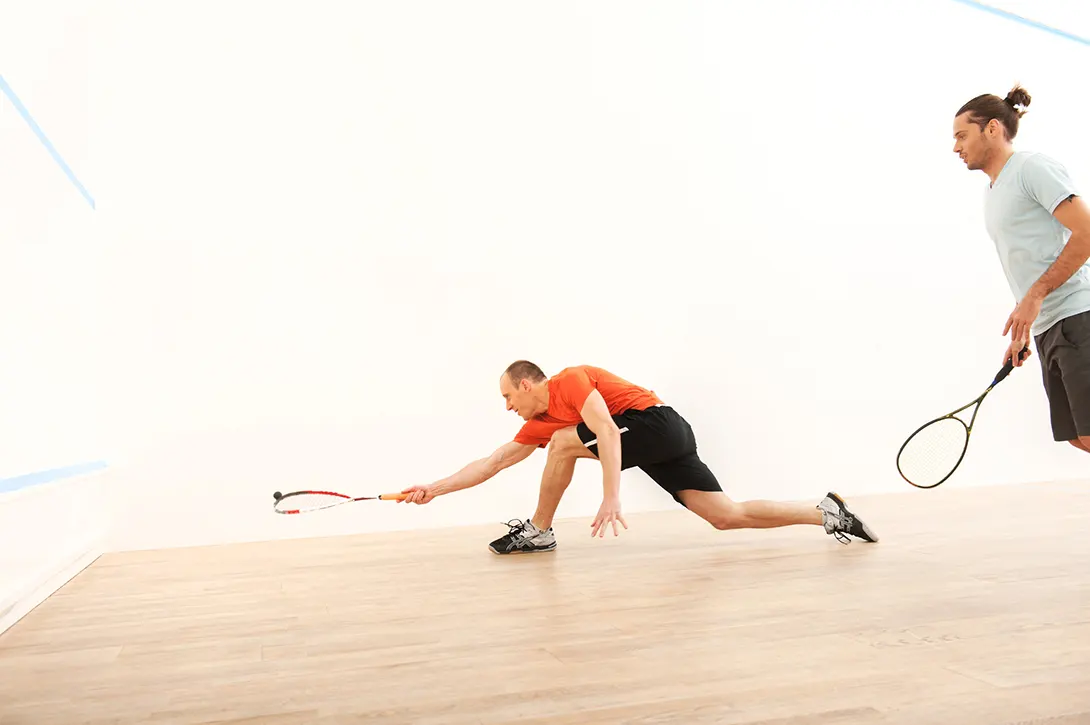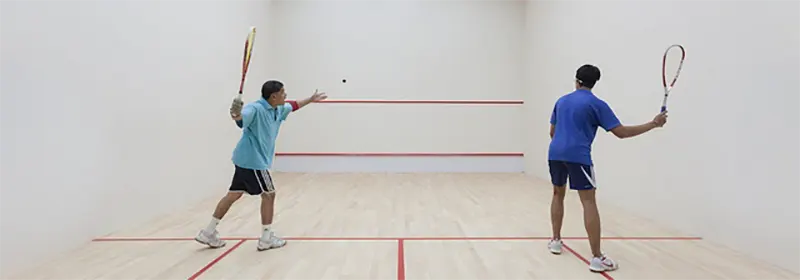28 April 2023 / 3-Min Read / Translate
One of the differences between professional squash players and recreational club players is the decision making process. When you play for fun, you can do whatever you want. When you play for a living, you need to be more careful. One clear example of this is defensive shots. Club players often don't have the fitness or the situational awareness to play the kind of shot that has the best chance of winning the point.
In many of these situations, club players will "go for a winner". They do this because staying in the rally seems like toture and at least if they go for the winner, they might get lucky. Unfortunately, they get lucky a lot less than they think they do, and if they do it gives them confidence to try again when in a similar situation. And just like in a casino, winning a few spins gives you more confidence than the situation deserves. Overall, you will hit more non-winners than winners - you will just remember the winners more clearly.
One shot that I rarely see at club level is the high defensive counter drop. Let's look at each word to ensure we are clear about its meaning. "High" refers to where it hits on the front wall. High and soft mean you have more time. "Defensive" refers to the fact that you are in some way under pressure. Perhaps that's because the ball is touching the side wall, or you are at full stretch, or even that you are rushed. "Counter" refers in this case to the idea that your opponent has hit a drop shot and you are replying to their drop with another drop. And lastly "drop" refers to the idea of hitting the ball softly and to the front.
So to summarise: You are playing a drop from your opponent's drop, it's difficult for you to hit it and you hit it high to give yourself the best chance of winning the rally. Sounds simple, right? Well, explained like that, it is, but of course in the heat of battle, it's a little harder.
At first glance, it may seem like you are simply giving your opponent a chance to hit a winner. And in some ways you are, but we have all experienced that time when all we needed to do was hit the ball away from our opponent to win the point, and suddenly we doubt ourselves, or worse, we over-think it and hit either a tin or a terrible shot.
They have to return the ball in such a way as to limit your options, and the best way to do that is to hit it back in exactly the same way you hit it, i.e. straight down the wall to the back.
A Rally Reset is often signified by a lob, which will take away the attacking player's advantage, but a lob is not the only way to negate those attacking shots.

About to hit a lob? Certainly looks like it.
Those rallies up and down the wall are fascinating, at least to me. In addition to the obvious attempt by both players to force each other to hit a weaker drive, there is also the psychological battle of "Tightness Supremacy". That's not a proper term, it's just something I invented to describe the situation.
I've written about how the Side Walls Can Be Your Friend Or Your Enemy, and it's true from beginner to World Champion, although the better you get the more comfortable you are with the side walls. That's one of the many reasons why even after a very long break, skilful players can return to the court and still hit tight straight drives off tight straight drives - It's a bit like riding a bike: you never really forget!
I love to encourage my pupils to play condition games, especially the Alley Game, because it teaches players so much about movement, height, variation and concentration. In fact, I would absolutely LOVE a world Championship in condition games, where players play the best of three games: Length Only (first bounce past the short line), Right Alley and Left Alley (Both within the service box width). Do you think the best players would still be the best players? I'm not sure I do.'

Here are two players NOT playing a serious condition game of squash, and more likely dancing to some imaginary music.
A Rally Reset shot is perfect for all levels of players, but the better the squash players, the better the shot has to be - obviously. At club level, a shot that takes away one player's advantage might simply be a deeper-than-usual drive, whereas at higher levels, it almost certainly is a great shot in itself.
A rally reset shot needs to give you time, which is why a lob works so well, or it needs to stop your opponent from volleying. Anything that negates the advantage the player seems to have.
What is important though is the awareness and the decision-making process. Club players need to quickly accept that they are under pressure and play the shot accordingly. Too many club players hit the ball with little or even no intention and consequently play the wrong shot at the wrong time. If you could put the mind of a professional squash player into the body of an amateur club player, that club player would win a lot more matches.

In many ways, even a service return is a rally reset shot. You are trying to negate the advantage that the server has.
Don't be proud, recognise you are under pressure and play a shot that gives you time to recover back to the T and stay in the rally. Learn to become more comfortable with the side walls and be happy rallying up and down the wall until an opening appears.
You don't get extra points for winning the rally quickly, so there's no rush. Attack when the opportunity is there, otherwise wait for the right time.